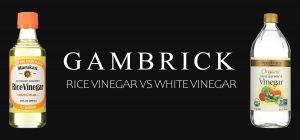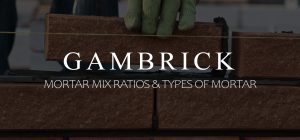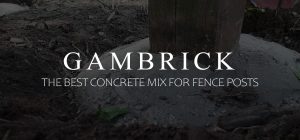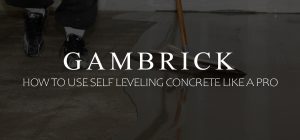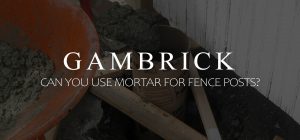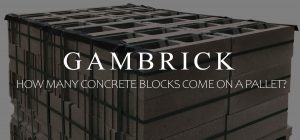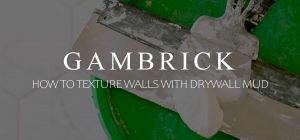
Are Concrete And Cement The Same Thing?
Concrete and cement are not the same thing. I’ve been working as a mason and builder for over 25 years and hear people confuse the two materials all the time, often using the terms concrete and cement interchangeably, but they’re completely different materials. Concrete is made of sand, stone and cement mixed together with water. Cement is the binder that forms a sticky paste when mixed with water that holds concrete together. It then dries out and cures to become rock hard and very strong. Think of it like baking a cake. Concrete is the cake while cement is the flour. Without flour you couldn’t make cake. But flour and cake are not the same thing.
Sand and stone are also very important ingredients and in this analogy would act similar to sugar and eggs.
Cement is made through a controlled chemical combination of calcium, silicon, aluminum, iron and other ingredients. These ingredients are super heated in a kiln until they form a rock-like substance called clinker that is then ground into the fine white powder we call cement.
Even though cement is one of the primary ingredient used to make concrete, they’re not the same thing. Concrete is much stronger than cement because it contains sand and stone.
Cement on its own is fairly weak and easily cracks because it doesn’t contain aggregate to give it strength.
If you need a strong structural materials for a foundation or slab, use concrete. However, if you’re creating concrete, grout, or mortar, use cement.
The Difference Between Concrete & Cement
Although the terms are often used interchangeably, cement and concrete are not the same thing.
Cement is one of the most important ingredients used to make concrete and other masonry products like grout and mortar. But its not used by itself very often. This is because without other ingredients it’s weak and prone to cracking.
Cement is used as a glue to bind together other materials which creates something new such as:
- When you mix it with sand it becomes grout.
- Mix it with sand and lime to make mortar which is stronger than grout.
- If you mix cement, sand and stone you get concrete.
Water is the final ingredient, and its very important, because water is what activates the cement. Without water, all you’d have is a mixture of useless dry ingredients. But when those ingredients are mixed with water a chemical reaction occurs. The cement transforms into a sticky paste that binds the ingredients together. When the cement paste later dries and hardens, it permanently gains the strength and durability of the other ingredients.
Cement is a substance that’s used to make other materials. On its own cement isn’t that strong and prone to cracking. Concrete is one of the materials cement is used to make. It’s very strong and durable because it contains sand and stone.
The modern world is built out of concrete. Foundation, driveways, roads, bridges, dams, buildings, etc. are all made from concrete because it’s strong and durable. And that concrete wouldn’t be possible without cement.
The Fundamentals Of Concrete
Concrete is a mixture of cement sand, stone and water. It’s one of the most widely used building materials in the world for both residential, commercial and industrial construction. It’s easy to make and work with, super strong, durable, weather resistant, versatile and very affordable.
The ratio of ingredients used to mix concrete can be altered to change its strength. For example, a basic 1:2:3 ratio means 1 part cement, 2 parts sand and 3 parts stone. The result is a 4000 psi concrete. PSI stands for pounds per square inch of compressive strength. Which means the concrete can hold 4000 lbs per sq inch without breaking.
Concrete is typically mixed and ordered by the cubic yard which is a volume measurement not weight. A cubic yard of concrete fills an imaginary cube that’s 3 feet wide x 3 feet long x 3 feet tall. I can be mixed yourself on site, bought in bags or delivered by a concrete truck.
The ingredients used to mix concrete should be very clean. Any organic material found in the stone, sand or water can alter the mixture. The water should be fresh and free of any contaminants, salt or chemicals.
- Made of sand, stone and cement mixed with water.
- The water must be fresh and clean.
- The aggregate materials should be very clean and free of contaminants.
- Extremely strong and durable.
- Will harden in the shape of whatever form it’s poured into.
Concrete is a versatile building material that will dry in the shape of any form its poured into. This is how footings, foundations, countertops, statues, cast products and poured concrete walls are made.
The Fundamentals Of Cement
Cement is a bind material that’s made from iron, aluminum, silicon, calcium, and other substances. Those substances are found in limestone, shells, chalk, clay, iron ore, and silica sand.
The ingredients are ground down and super heated in a kiln to produce a rock-like substance called clinker. The clinker is then ground down into an extremely fine white powder called cement.
Cement is a hydraulic material which means it chemically reacts with water. When cement is mixed with water, it activates and becomes a sticky paste. The paste then dries and hardens over time. This process is called curing and typically takes about 28 days to complete.
Cement is rarely used by itself because alone it’s weak and brittle. But when you add other ingredients to the mixture it inherits their properties like strength and durability.
- Cement plus sand becomes grout. Grout is used in between tiles and stone in bathrooms and kitchens.
- When cement and sand are mixed with lime it becomes mortar. Mortar is used to stack bricks, stone, block and other masonry materials.
- Concrete is a mixture of cement, sand and stone mixed with water. The more stone and sand you add, the stronger the concrete becomes. However it also becomes harder to work with and less malleable. More cement makes concrete easier to smooth, but weaker with less compressive strength.
- Colored powder can be added to cement based products.
There aren’t many uses for cement by itself. But pretty much every masonry material you can think of contain it. This even includes cast products like blocks, pavers, cultured stone, fireplace surrounds, countertops and statues.
Concrete Vs Cement
Concrete and cement are not the same thing. Although cement is used to make concrete, they’re very different materials used to make different things.
Concrete is a finished material that’s very strong and durable. It’s used to make sidewalks, driveways, roads, patios, stairs, walls, foundations, footings and other structures. It has a very high compressive strength which means it can bare a lot of weight without cracking. But because it contains stone you can’t apply it thin or it will crack.
Concrete is not a good material to use in thin layers. I don’t recommend pouring it less than 4 inches thick for things like driveways, patios or sidewalks. And it definitely needs reinforcement inside like rebar and/or wire mesh.
Concrete can be poured as thin as 1.25 inches to make countertops but you should use wire mesh reinforcement and some chemical additives to strengthen it.
Cement is one of the most important ingredients used to make concrete. But it’s found in grout and mortar. Because grout and mortar don’t contain stone, they can be applied very thin. If you need a thin plaster coat over a block wall mix some Portland Cement with Sand and Lime.
Mortar is also used to stack bricks and stone. Or to stick stone and brick to a masonry wall.
Cement is also the primary ingredient used to make grout along with sand. Grout is the material used to fill the gaps between tile and stone. It’s also used as a brick and stone joint filler by squeezing it out of a masonry bag.
Concrete is a finished product that’s used all by itself. Cement is rarely used by itself but is found in just about every other masonry material.
Is Cement Stronger Than Concrete?
No, concrete is much stronger than cement. Concrete has extremely high compressive strength which it’s used to build footings, foundation, walls, driveways, sidewalks, patios, stairs and other concrete structures. You could never build any of these things out of cement alone. Compressive strength is a materials ability to bare weight without breaking. This is why it’s so important for foundations and other structures.
Tensile strength is a materials ability to resist twisting or pulling forces. Both concrete and cement are weak in this area. However concrete is slightly stronger. And it almost always contains reinforcement like rebar and/or wire mesh to compensate for its low tensile strength.
Cement is the active ingredient used to make concrete along with sand and stone. In fact you can’t even make concrete without it. So even though concrete is the much stronger material, cement is still essential.
Is Cement More Durable Than Concrete?
No, concrete is much more durable than cement. A well built concrete structure can last hundreds if not thousands of years when properly maintained. Cement is not used by itself to build things because it lacks strength and durability. It easily cracks and has very low tensile and compressive strength.
In addition to more strength and durability, concrete also has better weather resistance. This includes resistance to temperature fluctuations in Winter and Summer. Concrete is strong enough to resist its internal water freezing and then expanding. This is called the freeze / thaw cycle. But cement along would crack under the pressure.
If you want cement to be durable you have to add other materials to it which transforms it into something else. Add sand to cement and you get grout. Add sand and lime to make mortar. Both of which are much more durable than just cement.
Cement stone and sand mixed with water makes concrete.
Concrete is most durable building material cement can be turned into.
Are Cement And Concrete Interchangeable Terms?
No. Cement and concrete are two completely different things. However many people use the terms cement and concrete interchangeably. Probably because they’re both masonry materials used in construction. They both start off as a dry grayish white powder. And they’re both mixed with water. But that’s where the similarities end.
Concrete actually contains cement. It’s made from cement, sand and stone mixed with water. Because of the sand and stone concrete is extremely strong and durable.
Cement is a binder material that works like a glue. It’s used to make other materials like grout, mortar and concrete by adding additional ingredients like sand, stone and lime.
- Cement mixed with sand makes grout.
- Mix cement, sand and lime to make mortar.
- Mixing cement, sand and stone together makes concrete.
You would never use concrete in place of cement on a project. And you would never substitute cement for concrete. That change would be a disaster.
Even though many people will always use the terms cement and concrete interchangeably, it’s incorrect. The two materials are very different and not interchangeable.
Should I Use Cement Or Concrete?
Concrete is much stronger and more durable than cement and used to build things. Cement is primarily used to make other materials like grout, mortar and concrete. But it’s rarely used all by itself. So which you should use depends on the project you’re working on.
If you’re pouring a footing, patio, driveway, countertop, cast product, set of steps or building a wall then use concrete. You should also use it to set posts for a fence, flag pole or mail box. If you’re building something structural then you should use concrete.
There are a bunch of projects where concrete isn’t used which include:
- Concrete isn’t used as a binding material. If you’re stacking blocks, bricks or stone then you need mortar. To make mortar you mix cement with same and a bit of lime.
- Concrete isn’t used to fill joints either. If you’re filling the joint between tiles, stone, bricks or blocks, what you need is grout. To make grout mix cement with sand.
- Another job concrete can’t be used for is as a coating material. If you’re plastering a block wall you need plaster which is a form of mortar.
- Concrete isn’t used to secure masonry to a wall. If you’re working with thin brick or stone veneer you need mortar.
Which material you should use depends on the project. Concrete is better for large jobs that are structural. But cement is better for small projects. However, cement is almost never used all by itself. Rather, it’s turned into other materials by adding additional ingredients like sand and lime.
In fact, cement is even used to make concrete by adding stone, sand and water.
Does Cement Mean Concrete?
No, cement and concrete are very different materials. Concrete is a mixture of cement, sand, stone and water. It’s an extremely strong and durable building material used to make footings, foundations, walls, countertops, patios, driveways and other structures. Cement is an ingredient used to make other materials like grout, mortar and concrete. But it’s rarely used all by itself.
Both materials start off as a dry powder that’s mixed with water. Once mixed, they become a paste that then dries and hardens. This process is called curing and take about 28 days to complete.
The terms cement and concrete are often confused and used interchangeably. But they are not the same material and should never be substituted for one another. If you’re mixing grout, mortar, plaster or concrete, you need cement. Concrete can’t be used to make other materials because it contains stone.
If your plans call for concrete, never use cement instead. It’s much weaker, prone to cracks and has very little compressive or tensile strength.
Are Sidewalks Cement Or Concrete?
Sidewalks are built out of solid concrete. Typically they also have some reinforcement inside like rebar or wire mesh to help prevent cracks. They’re sometimes referred to as cement sidewalks because people use the terms cement and concrete interchangeably. But it’s incorrect. Sidewalks are always made out of concrete. If you used cement to build a sidewalk they would quickly crack and deteriorate.
Should I Use Concrete or Cement For Fence Posts?
You should always use concrete to set a fence post. It’s stronger, heavier and more durable. When setting a fence post in place, both the dirt and concrete act as an anchor which holds the post firm and upright. When the winds blows it creates lateral force that can shake the post or crack its foundation. Wind can also create an updraft that can lift a post right out of the ground. The material you use to anchor a post needs to be both strong and heavy.
Under the post’s footing should be a bed of gravel a few inches thick. This creates a place for water to settle and drain away from the post.
Summary: Are Concrete And Cement The Same Thing?
Concrete and cement are not the same thing. Although the terms are quite often used interchangeably and in the wrong way. Concrete is made by mixing sand, stone and cement with water. Cement is a very important ingredient used to make concrete. But they’re not the same material. Concrete is created when water and cement mix to form a sticky paste that binds with sand and stone. It then dries and cures to become rock hard and very strong. Think of it like baking a cake. Concrete is the cake while cement is the flour. Without flour you couldn’t make cake. But flour and cake are not the same thing. Sand and stone are also very important ingredients and in this analogy would act similar to sugar and eggs.
Cement is made through a controlled chemical combination of calcium, silicon, aluminum, iron and other ingredients. These ingredients are super heated in a kiln until they form a rock-like substance called clinker that is then ground into the fine white powder.
There are very few uses for cement alone. It’s a hydraulic material that activates to form a sticky paste when mixed with water. When the cement dries it becomes solid and hard. Cement is a binder that’s used to create other materials. Such as grout, mortar and concrete.
Even though cement is one of the primary ingredient used to make concrete, they’re not the same thing. Concrete is a very strong material because it also contains sand and stone. But cement on its own is fairly weak and easily cracks. It needs sand and stone to give it strength and durability.
If you have any questions about Concrete or Cement, email any time.

John Mazzuca | About | More Posts |
Custom Home Builder
John Mazzuca is a custom home designer and builder at Gambrick with over 25 years experience in the construction industry. John has designed, built and/or remodeled hundreds of homes, small buildings, and commercial projects. He writes about business, real estate, home building, and household electronics. His work has been featured in Fox Business, Better Homes & Garden, House Beautiful, and more.

